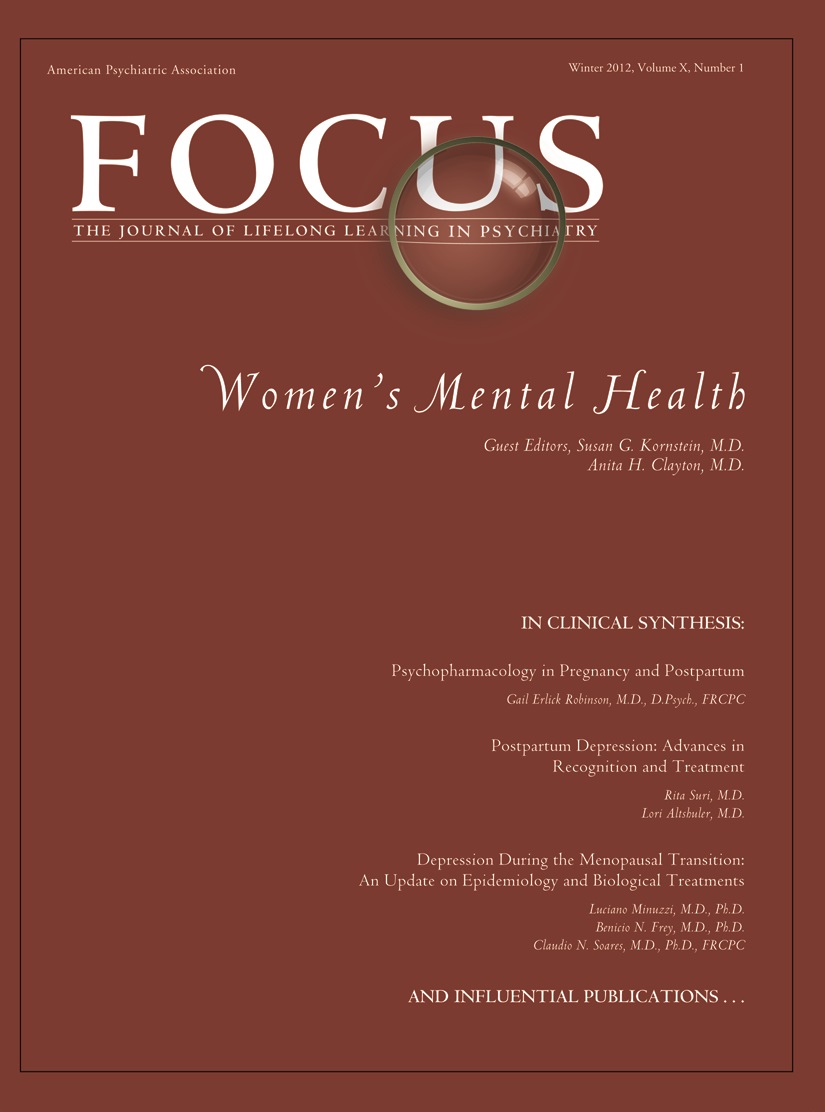Diagnosis, Pathophysiology, and Management of Mood Disorders in Pregnant and Postpartum Women
Abstract
Mood disorders disproportionately affect women across the lifespan. Mood disorders in pregnancy and the postpartum period are common and have profound implications for women and their children. These include obstetric and neonatal complications, impaired mother–infant interactions, and, at the extreme, maternal suicide and infanticide. Because obstetrician–gynecologists are often the first (and sometimes the only) point of contact for young women in the health care system, familiarity with the presentation and treatment of depressive illness in the perinatal period is imperative. The goal of this review is to synthesize essential information on depressive illness in the perinatal period with a focus on its most common and severe presentations, major depressive disorder and bipolar disorder. Accurate diagnosis of unipolar major depressive disorder from bipolar disorder can facilitate the selection of the best possible treatment alternatives. Counseling may be sufficient for perinatal women who have mild to moderate depression, but women who are severely depressed are likely to require antidepressant treatment. Women with bipolar disorder are at high risk for relapse if mood stabilizer medication is discontinued, and they are vulnerable to relapse near the time of delivery. Comanagement of their care with psychiatrists will increase their chances of avoiding a recurrence of illness.
(Reprinted with permission from Obstet Gynecol 2011; 117:961–977)



